Activities in the pig farming industry include pig rearing and farming. The industry is characterized by progressive specialization, with the result that industry players focus on raising or breeding gilts, pigs, or market hogs. Germany is also one of the largest industrial animal and meat producing countries in Europe, with a strong preference for pigs. Let’s check out pig farming in Germany.
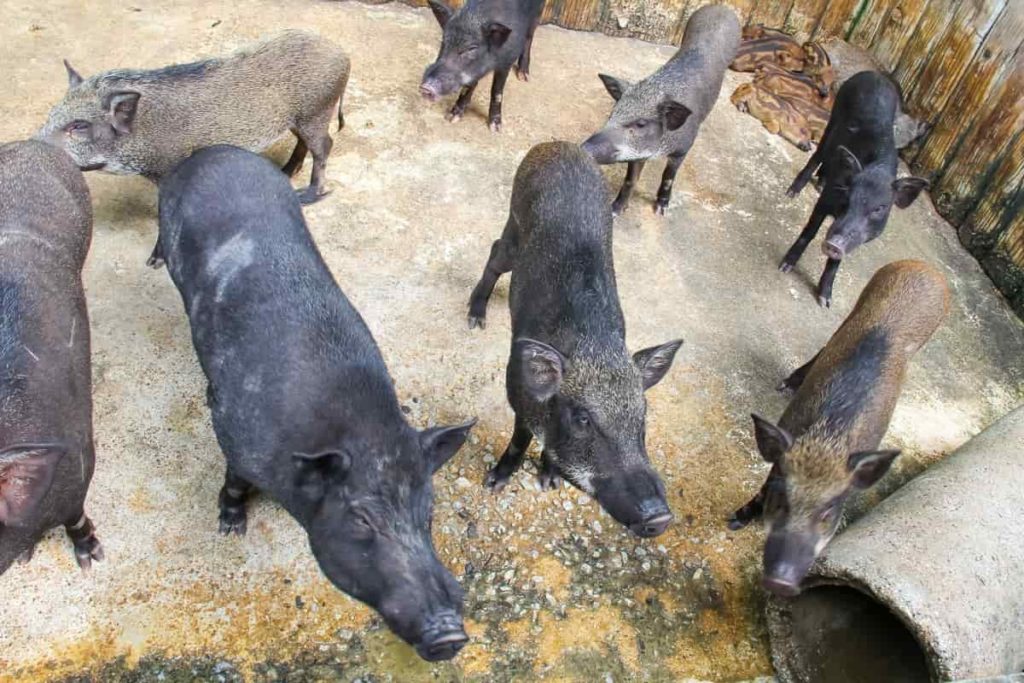
Pigs convert inedible feeds, forages, some grain by-products from mills, meat by-products, spoiled food, and garbage into valuable nutritious meat. Most of these feeds are either inedible or not very tasty for humans. Pigs grow rapidly and are prolific breeders, rearing 10 to 12 piglets at a time.
Pig production in Germany
There are approximately 26 million pigs in 22,400 farms in Germany, of which 1.8 million are sows. It ranks Germany second in Europe after Spain (30 million pigs). The number of pigs in Germany has dropped by about 4% over the past year. In Germany, pig farming is concentrated in the northwestern states of Lower Saxony and North Rhine-Westphalia. In Bavaria, pig farming is mainly found in the southeast.
The structure of pig farming varies greatly between different parts of Germany. Unlike East Germany, farms in South Germany are relatively small, while farms in northwestern Germany are of medium size. In Germany, pigs are mainly kept on slatted floors. However, straw is increasingly used as an enrichment material, for example, to prevent tail biting. The new pens are built with somewhat enclosed floor areas with a light layer of straw for the bed and external access for pigs.
The division of labor is a standard in German pig farming, meaning that the majority of pigs are raised on farms that specialize in raising pigs or fattening pigs. In Bavaria, about 65% of piglets are transferred through pig production farms to specialized pig fattening units. Though, the remaining 35% of piglets are kept in combined farms, which integrate piglet production and fattening.
In case you miss this: Pig Farming in Australia: Breeds, How to Start, Tips, and Ideas
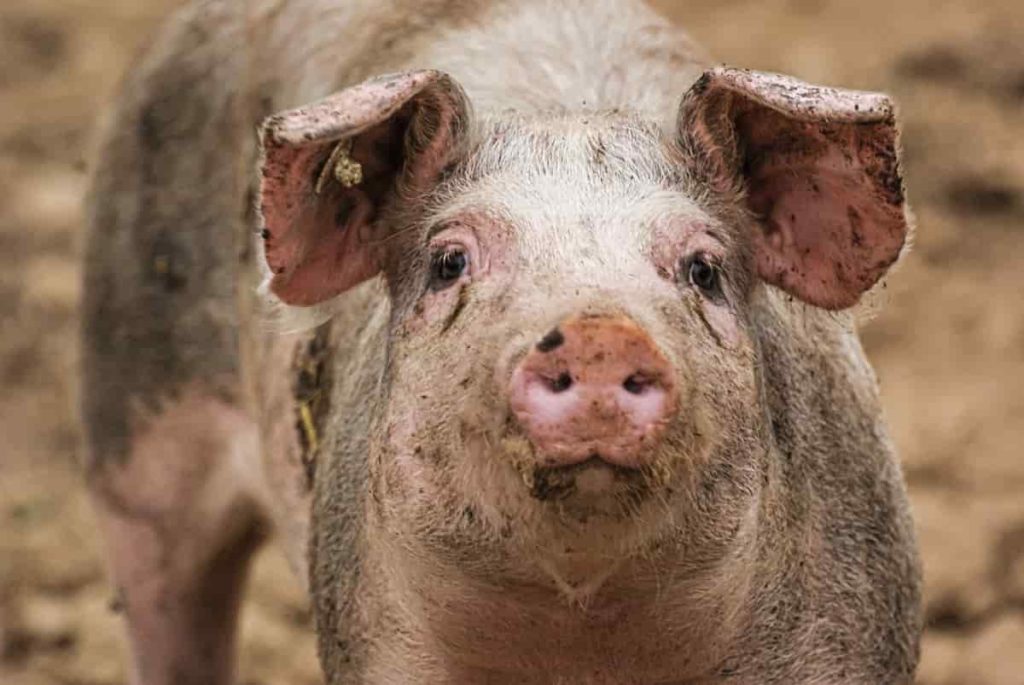
In Germany, the number of piglets production is not enough for our fattening capacity. So, Germany imports about 11 million piglets annually from Denmark and the Netherlands. Pork is the most important type of meat in Germany. The level of self-sufficiency for pork is about 120% in Germany (compared to about 97% in Bavaria). Organic pork production is about 1%.
Germany – the biggest producer of pork in Europe
Germany has a long tradition of pork production. Production methods and structures have reached a high level, and animal genetics, animal health, production equipment, and hygiene are constantly being improved.
About 26 million pigs are kept in Germany for meat production. Pig stocks are mainly concentrated in northwestern Germany. With about 30% stock of pigs, Lower Saxony is the most important production point in Germany, followed by North Rhine-Westphalia and Bavaria. Germany exports more than 2.7 million tons of pork to more than 100 countries, thus meeting the growing demand for high-quality meat.
German pig fattening is made up of a variety of breeds. Therefore, along with the high-performance animals that are a cross-breed of the German native breed and the Pietrains, there are several traditional breeds of pigs such as Swabian-Hall Swaine, Bentheim Black Pied, and Angeln Saddleback. All breeds are known for being healthy and producing excellent meat.
As the number of pig-keeping businesses declines, specialization is increasing. In Germany, there are approximately 26 million pigs in 20,000 businesses. About 60% of all pigs are raised in businesses with over 1,000 animals. Rising production has pushed pork production to record levels.
Pig breeds are originating in Germany
Anglin Saddleback
The Anglin Saddleback is also a rare breed of domestic pig that is primarily raised in Schleswig-Holstein, Germany. It is a large, eared, black pig with a white stripe around its body.
In case you miss this: Pig Diseases, Symptoms, and Treatment
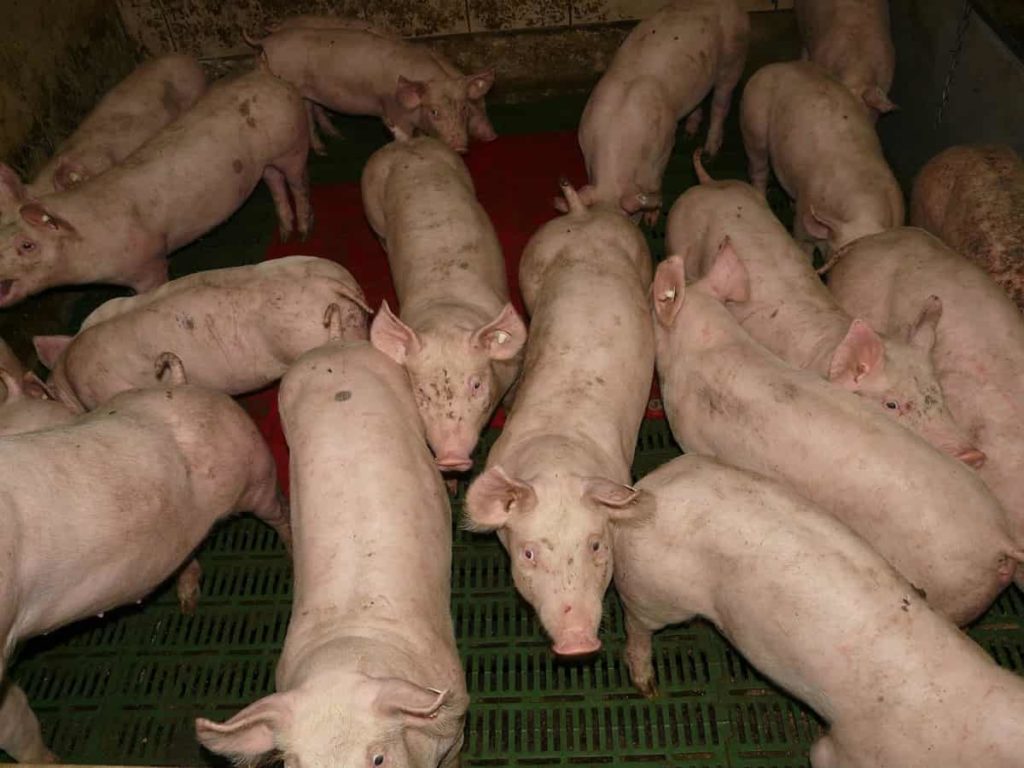
Bentheim Black Pied Pig
The Bentheim Black Pied Pig, also known as the Schwarz-Wesses or Buntes Bentheimer Schwein, is a rare breed of domestic pig in Germany. These are medium-sized, lop-eared, and white color with gray rings with black spots. Boar’s average 75 cm in height, weight 250 kg; sows an average height of 70 cm, weighs 180 kg.
Danish Protest Pig
This is a rare breed of domestic pig. This is a medium to large animal. It is mainly in red with a wide white vertical belt and white horizontal belt mark. The average height of a Danish Protestant pig is about 92 cm. The average weight of mature boars is about 350 kg. And the average living body weight of mature sows is about 300 kg. Protecting pigs are very active and calm. They are suitable for people who want to start a pig farming business, i.e., for beginning breeders, even though they are rare breeds at the moment. Pigs are tough and strong and can withstand different seasons. However, they perform well in the local climate.
Swabian-Hall swine
This is a breed of domestic pig that starts at Schwäbisch Hall in Baden-Württemberg, Germany.
Feeding management
The breeding and feeding of domestic pigs are ecological pig farming. Organic pig farming aims to provide the best management and living conditions that ensure high-quality animal care and health, nutrition, a closed soil-plant-animal cycle, and production of high-quality equipment. Because many farmers are interested in raising healthier pigs, there is a huge market for organic pig feed.
In pig farming, nutrition is very important. Pigs can eat everything humans eat. They are omnivores; that is, they can eat food from both vegetable and animal origin. For pigs to perform well, they need a balanced diet and adequate feed. Pigs can eat kitchen waste, edible vegetables, farm by-products such as cassava husks, yam husks, corn husks, etc.
In case you miss this: Pig Farming Tips, Techniques, Ideas, and Secrets
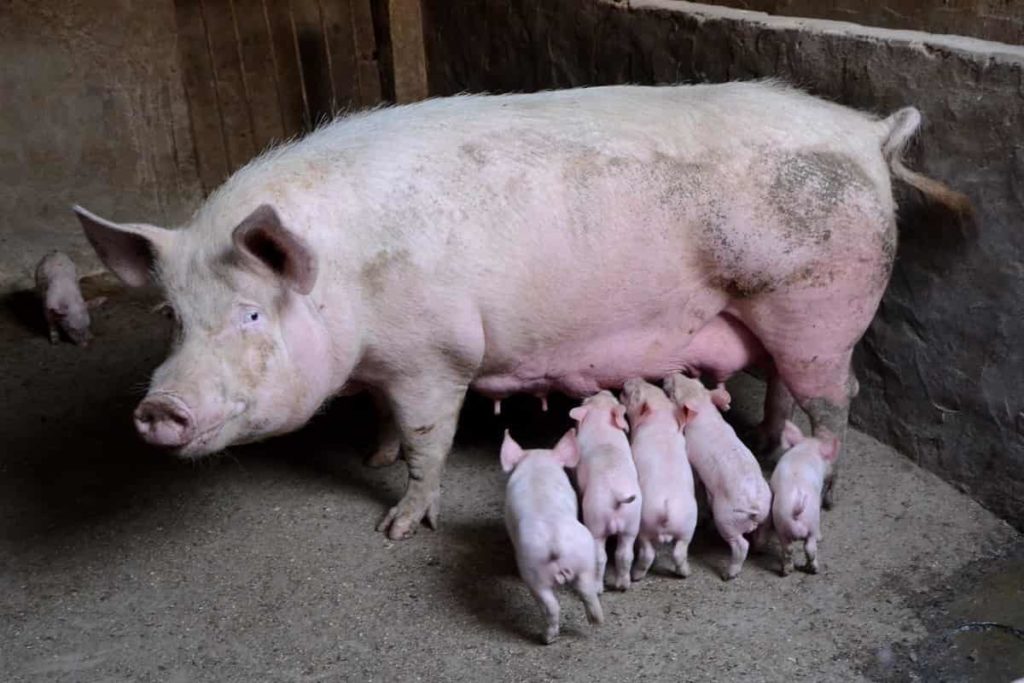
Things to consider when formulating feeding ration
- Most economic ingredients should be selected.
- Grains – Maize, Millet, Oats, other millets, Wheat, and Rice should be the main ingredients.
- Protein Supplements – Oil cakes and fish meal and meat meal
- No vitamin supplements are necessary if pigs are allowed to pasture or fresh green legumes are fed. Vitamin B12 supplementation will be necessary if little or no animal protein is fed.
- Antibiotic supplements at the rate of 11 mg antibiotic per kg ration.
- Mineral supplements should be provided.
Water facilities for pig farming in Germany
Every pig needs adequate access to feed. Poor access to feed produces uneven growth and condition, affects feed conversion efficiency, and increases the proportion of downgraded pigs. Clean, cool, and good quality water should be available at all times, except when it is more appropriate to provide the pig with the right amount of whey. Weaner pigs should be supplied with water through bite-type nipple drinkers or pressure plate bowls, one drinker for every 6-8 weaning pigs.
Growers and finishers should have one drinker for every 10-15 pigs, although more drinkers are needed in warmer climates. It is recommended to drink at least two drinks per pen. Floor areas should be placed on slates to prevent them from getting wet, and pigs should be encouraged to use slates to excrete dunging and urinating. Push-type nipple drinkers waste more water than cutters or cup drinkers, but they allow growers and breeders to wet their skin in hot weather. As a general guideline, an entire herd will need approximately 140-160 L per sow per day (250-300 L per sow per day when flushing is included).
Prevention and control of pig diseases in Germany
All pigs should be vaccinated against swine fever at 2-4 weeks of age. Though breeding pigs must be tested for brucellosis and leptospirosis. As a routine measure, all young pigs should be vaccinated against swine fever during weaning. Animals purchased for the farm should be purchased from a disease-free herd. Newly purchased animals should be kept separate from other animals on the farm for three to four weeks.
In case you miss this: Organic Pigeon Pea Farming – Red Gram, Toor or Arhar
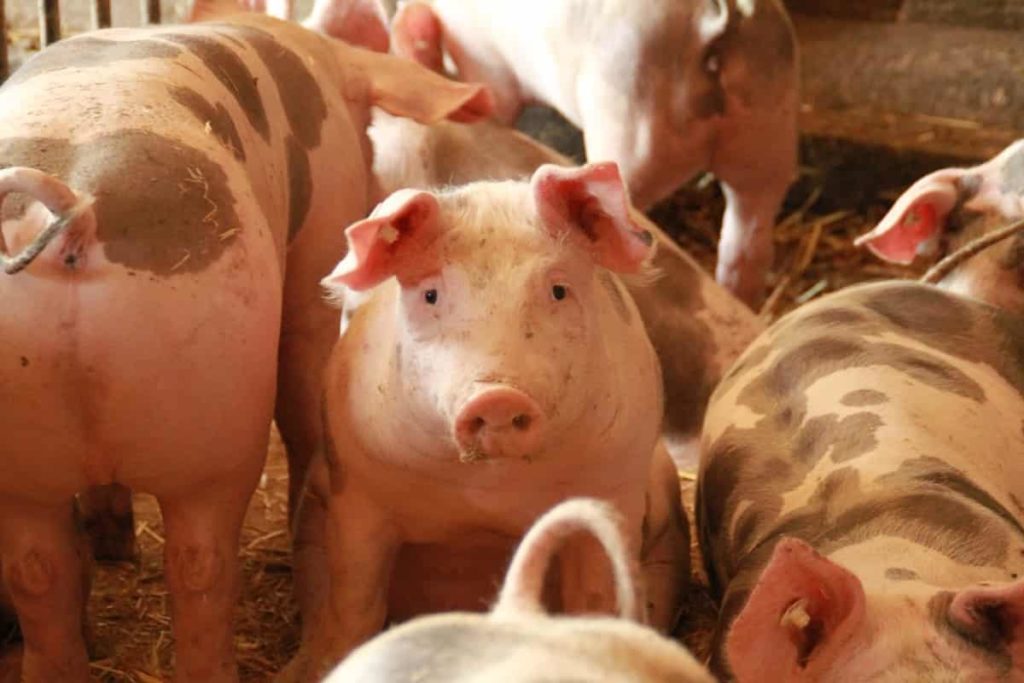
No visitors are allowed to visit the pig farm. Stys or pig houses that are cleaned by animals are kept empty for three to four weeks to destroy the microorganisms that cause the disease. Several diseases can affect the health of pigs. Some are caused by microorganisms, which usually live in the gut of pigs and are therefore present in manure. In unhygienic sheds, they can infect live pigs with dung or dust particles from the air.
Clean, dry conditions reduce germ populations and reduce their impact on pig health and performance. Pig sheds that have effluent channels, where the manure is immersed in water inside the channels, can reduce the levels of dust, odors, and airborne bacteria.
Pig breeding in Germany
At about 20% in Germany, the largest pig population in the European Union. About 1,700 breeding farms (nucleus and multiplication breeding) have about 100,000 registered breeding animals. Foreign demand for breeding and slaughtering pigs, piglets is increasing year by year. Germans meet this demand with a wide range of products. Breeders in Germany meet high consumer expectations by;
- Organized Performance Testing
- Strict Breed Selection
- Strict Quality Control
More than 95% of German slaughter pigs are cross-bred pigs and some of them are crosses between two breeds. Some animals come from crossbreeding programs with many breeds and lines, which were bred for their specific combining ability. All pig breeds are selected for stress resistance.
In case you miss this: Pig Feed Chart and Pig Weight Chart for Beginners
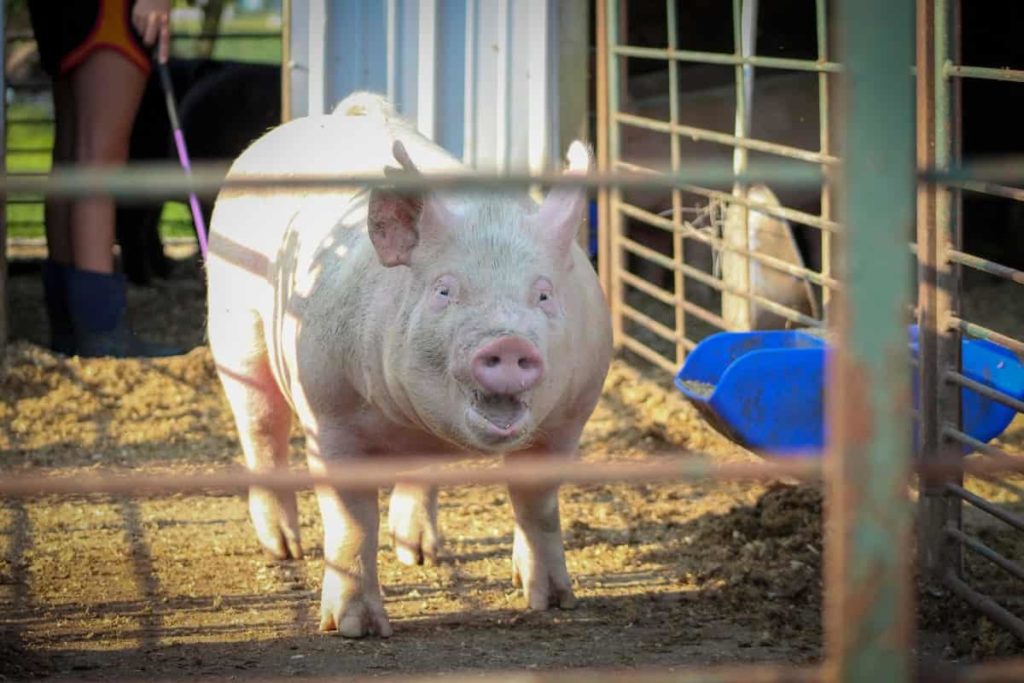
German pig breeders have a large breeding population, conducting systematic performance testing and applying the latest methods of genetic diagnosis. Performance data is recorded at all stages of growth and production and is used for genetic and economic evaluation. Strict quarantine measures by European standards for export are observed on the original form and destination. Documents with breeding animals include official health certificate and breed certificate, pedigree data, performance information, and identification data.
Pig artificial insemination (AI) centers in Germany are working with researchers to improve their work. German breeding and insemination centers not only offer high-quality breeding material for sale but also offer pig-focused services. It includes advice on buying, breeding, and transportation arrangements. The full service includes information on reproduction, health protection, production technology, feeding and husbandry, environmental protection and management, and performance and economic success testing.
- Types of Pesticides Used in Agriculture: A Beginner’s Guide
- Economical Aquaculture: A Guide to Low-Budget Fish Farming
- 15 Common Planting Errors That Can Doom Your Fruit Trees
- How to Make Houseplants Bushy: Effective Tips and Ideas
- Innovative Strategies for Boosting Coconut Pollination and Yield
- Pollination Strategies for Maximum Pumpkin Yield
- The Complete Guide to Chicken Fattening: Strategies for Maximum Growth
- Natural Solutions for Tulip Problems: 100% Effective Remedies for Leaf and Bulb-Related Issues
- Revolutionizing Citrus Preservation: Towards a Healthier, Greener Future
- Natural Solutions for Peony Leaf and Flower Problems: 100% Effective Remedies
- Maximizing Profits with Avocado Contract Farming in India: A Comprehensive Guide
- Natural Solutions for Hydrangea Problems: 100% Effective Remedies for Leaf and Flowers
- The Ultimate Guide to Choosing the Perfect Foliage Friend: Bringing Life Indoors
- From Sunlight to Sustainability: 15 Ways to Use Solar Technology in Agriculture
- The Ultimate Guide to Dong Tao Chicken: Exploring from History to Raising
- The Eco-Friendly Makeover: How to Convert Your Unused Swimming Pool into a Fish Pond
- Mastering the Art of Delaware Chicken Farming: Essentials for Healthy Backyard Flocks
- 20 Best Homemade Fertilizers for Money Plant: DIY Recipes and Application Methods
- How to Craft a Comprehensive Free-Range Chicken Farming Business Plan
- Brighten Your Flock: Raising Easter Egger Chickens for Beauty and Bounty
- How to Optimize Your Poultry Egg Farm Business Plan with These Strategies
- Subsidy for Spirulina Cultivation: How Indian Government Schemes Encouraging Spirulina Farmers
- Ultimate Guide to Raising Dominique Chickens: Breeding, Feeding, Egg-Production, and Care
- Mastering the Art of Raising Jersey Giant Chickens: Care, Feeding, and More
- Ultimate Guide to Raising Legbar Chickens: Breeding, Farming Practices, Diet, Egg-Production
- How to Raise Welsummer Chickens: A Comprehensive Guide for Beginners
- How to Protect Indoor Plants in Winter: A Comprehensive Guide
- Ultimate Guide to Grow Bag Gardening: Tips, Tricks, and Planting Ideas for Urban Gardeners
- Guide to Lotus Cultivation: How to Propagate, Plant, Grow, Care, Cost, and Profit
- Agriculture Drone Subsidy Scheme: Government Kisan Subsidy, License, and How to Apply Online
- Ultimate Guide to Raising Araucana Chickens: Breed Profile, Farming Economics, Diet, and Care
- Bringing Hydroponics to Classroom: Importance, Benefits of Learning for School Students
- Ultimate Guide to Raising Polish Chickens: Breed Profile, Farming Economics, Diet, and Care
- Ultimate Guide to Raising Australorp Chickens: Profile, Farming Economics, Egg Production, Diet, and Care
- Silkie Chicken Farming: Raising Practices, Varieties, Egg Production, Diet, and Care
- Sussex Chicken Farming: Raising Practices, Varieties, Egg Production, Diet and Care